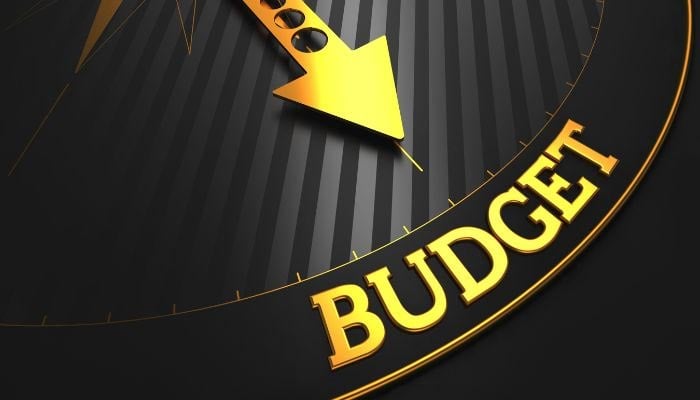The federal budget for 2023-24 has a special significance. It will be presented nine weeks before the end of the tenure of the Pakistan Democratic Movement (PDM) government.
This is usually the time when incumbent governments seek to improve their election prospects by presenting a budget with big tax breaks, larger subsidies and some subventions for the poorer sections of society.
This is what happened in 2012-13 and 2017-18. However, there is now an effective binding constraint to the presentation of this year’s budget. The International Monetary Fund (IMF) programme is in a state of jeopardy and Pakistan has been told by the fund that the forthcoming budget must adhere to the norms of tight and sensible budgeting for the program to continue.
Therefore, the fundamental question is: what should the priorities and strategy be in the federal budget for 2023-24? How much stabilisation ought to be achieved by significant contraction in the deficit in relation to the likely high level this year? This has become essential since large budget deficits tend to put pressure on the size of the current account deficit. Given the extremely low foreign exchange reserves, there will be a need to restrict the current account deficit to a near-zero level in 2023-24.
Further, there is a need to pursue a three-pronged strategy to stabilise the public finances. First, there will have to be a major effort at increasing the incidence of direct and progressive taxation. Tax rates on some indirect taxes have been raised in 2022-23 — and this has led to higher inflation. In fact, the incidence of taxes in Pakistan is markedly regressive.
The time has come to reduce the unexploited tax gap by withdrawing the wide-ranging exemptions, reliefs and concessions to the richer segments of society. Today, the tax system of Pakistan has effectively been captured by the elite.
The tax gap in Pakistan stands at 3% of the GDP, equivalent to Rs2,500 billion. Closing this gap will require a major broadening of the tax base beyond the industrial sector which contributes almost two-thirds to FBR revenues.
A large part of the unexploited tax base is in provincial taxes. The first case is that of the agricultural income tax. The distribution of farms by size is very uneven.
According to the latest Agricultural Census, 1% of the largest farmers own as much as 22% of the farm area. Even at half the tax rates, as on urban incomes, this tax has the potential of yielding up to Rs320 billion. This will require a big upward adjustment in the level of agricultural income by the Provincial Boards of Revenue in the assessments of tax liability. Today, this tax contributes less than Rs4 billion to provincial tax revenues.
The second relatively untapped area is the taxation of properties and property developers in the form of the urban immovable property tax, income tax on rental income, capital gains tax on property transactions and capital value tax on properties. The combined potential revenue yield from these taxes is close to Rs520 billion, whereas the actual revenue is Rs48 billion only.
The third area for yielding more revenues is the wholesale and retail trade sector, which is the largest sector in the economy. Today, the yield from income tax on this sector is Rs32 billion. This could be substantially enhanced to over Rs270 billion by expanding the coverage of the withholding tax on electricity bills and enhancing the fixed tax rates.
Therefore, if the federal and provincial governments focus on increasing revenues by progressive taxation in 2023-24, then additional revenues of almost Rs1,000 billion can be mobilized. This will add over 12% to national tax revenues.
Second, we need to focus on the scope for cutting current expenditure of the federal government, which is likely to approach Rs10,250 billion by the end of 2022-23. This expenditure has more than doubled in only the last four years.The first priority is to reduce the size of the federal government.
Today, there are as many as 35 ministries and hundreds of divisions, attached departments and autonomous bodies. There was the expectation following the devolution of functions in the 18th Amendment that there would be a big contraction in the size of the federal government. Instead, there has been uncontrolled expansion.
It is time for an end to all entities performing overlapping functions with the provincial governments, merger of divisions and zero-based budgeting of attached departments and autonomous bodies. Ideally, the federal government should be roughly half its present size.
The big expenditure currently on subsidies, contingent liabilities, new loans and grants is on the State-Owned Enterprises (SOEs). The total expenditure from the federal budget on these entities will approach Rs1485 billion this year.
It has quadrupled from Rs373 billion five years ago. The power sector can truly be considered as the black hole of the economy today. There must be attempts in 2023-24 to reduce system losses, ensure timely tariff adjustments and make a faster transition to renewable energy.
The annual cost of pensions of the federal and provincial governments combined has approached the large magnitude of Rs1,200 billion. There is a case for enhancement in the age of retirement to 63 years and establishment of pension funds.
Further, within defence services the scope for economy in non-combat expenditure may be examined.The other big issue relates to the phenomenal increase in the cost of debt servicing.
At present, there are extremely high interest rates of borrowing domestically of over 21%. Consequently, if these high interest rates continue then the burden of debt servicing could approach the colossal magnitude of Rs8,200 billion next year, compared to Rs5,400 billion this year. If this happens then an unbelievable 60% of federal expenditure will be preempted by debt servicing.
The big jump in debt servicing costs due to the extraordinary hike in interest rates has happened under pressure from the IMF as a means of tackling the high inflation. In fact, the opposite has happened. As interest rates have risen, the rate of inflation has gone up rather than come down. There is no option now but to bring down interest rates sharply in the economy.
Third, given the vigorous progress of resource mobilization from progressive sources and strong containment of current expenditure, enough fiscal space can be created for a big expansion in targeted relief for the poor.
The Benazir Income Support Programme should be doubled in size from Rs400 billion this year to Rs800 billion next year. In addition, the focus should be on measures to stabilise and reduce basic food prices. An employment guarantee scheme, of the type in India, may also be initiated for youth in Pakistan. The provincial governments should announce an increase in the monthly minimum wage to Rs40,000 and establish an appropriate mechanism to ensure implementation by the private sector.
Overall, the federal and provincial government budgets for 2023-24 should combine aggressive revenue mobilization from progressive sources with major containment of current expenditure. This will enable achievement of the twin goals of bringing down the primary deficit to zero and a big expansion in targeted relief, so as to somewhat alleviate the impact of high unemployment and poverty in the country. The above agenda of reforms will need to be implemented by the successor government after the elections in a short time-frame.
The writer is an economist and a former finance minister.
Disclaimer: The viewpoints expressed in this piece are the writer’s own and don’t necessarily reflect Geo.tv’s editorial policy.
Originally published in The News


